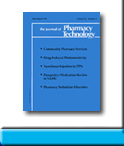 |
 |
DISCHARGE AND
READMISSION RATES WITH ATYPICAL ANTIPSYCHOTIC AGENTS
Jessica L Goren and Gary M Levin
To request full article click here.
OBJECTIVE: Newer atypical antipsychotic agents offer many advantages over conventional antipsychotic agents, including a decreased adverse effect burden, improved compliance, and superior efficacy. However, the atypical antipsychotic agents are considerably more expensive than conventional agents. We conducted a retrospective review to determine whether one atypical antipsychotic agent provided a significant advantage with regard to discharge or readmission rates in the inpatient population of a state psychiatric facility. In addition, we assessed whether one atypical antipsychotic agent was associated with an increased use of concomitant medications.
METHODS: All records for patients started on clozapine, risperidone, or olanzapine at any time during 1997 were reviewed. Each inpatient started on a study medication had his or her records reviewed for 1 full year after the medication start date. Each record was assessed for discharge status and concomitant psychotropic medication use. For those patients discharged, the readmission status was followed.
RESULTS: Patients treated with clozapine had the highest discharge rate (54%) and lowest readmission rate (16%) compared with risperidone (39% and 26%, respectively; p = 0.75) and olanzapine (39% and 26%, respectively; p = 0.88).
CONCLUSIONS: The highest discharge rate was seen in patients receiving clozapine. Treatment with risperidone was associated with the highest readmission rate and concomitant psychotropic use. Although the results are limited because of a small sample size, these findings provide some insight into the long-term efficacy of atypical antipsychotics and some potential differences in recidivism rates. These findings also suggest the need and importance of further study in this area.
J Pharm Technol 2002;18:13-5.
To request full article click here.
|
|
|
||
|

